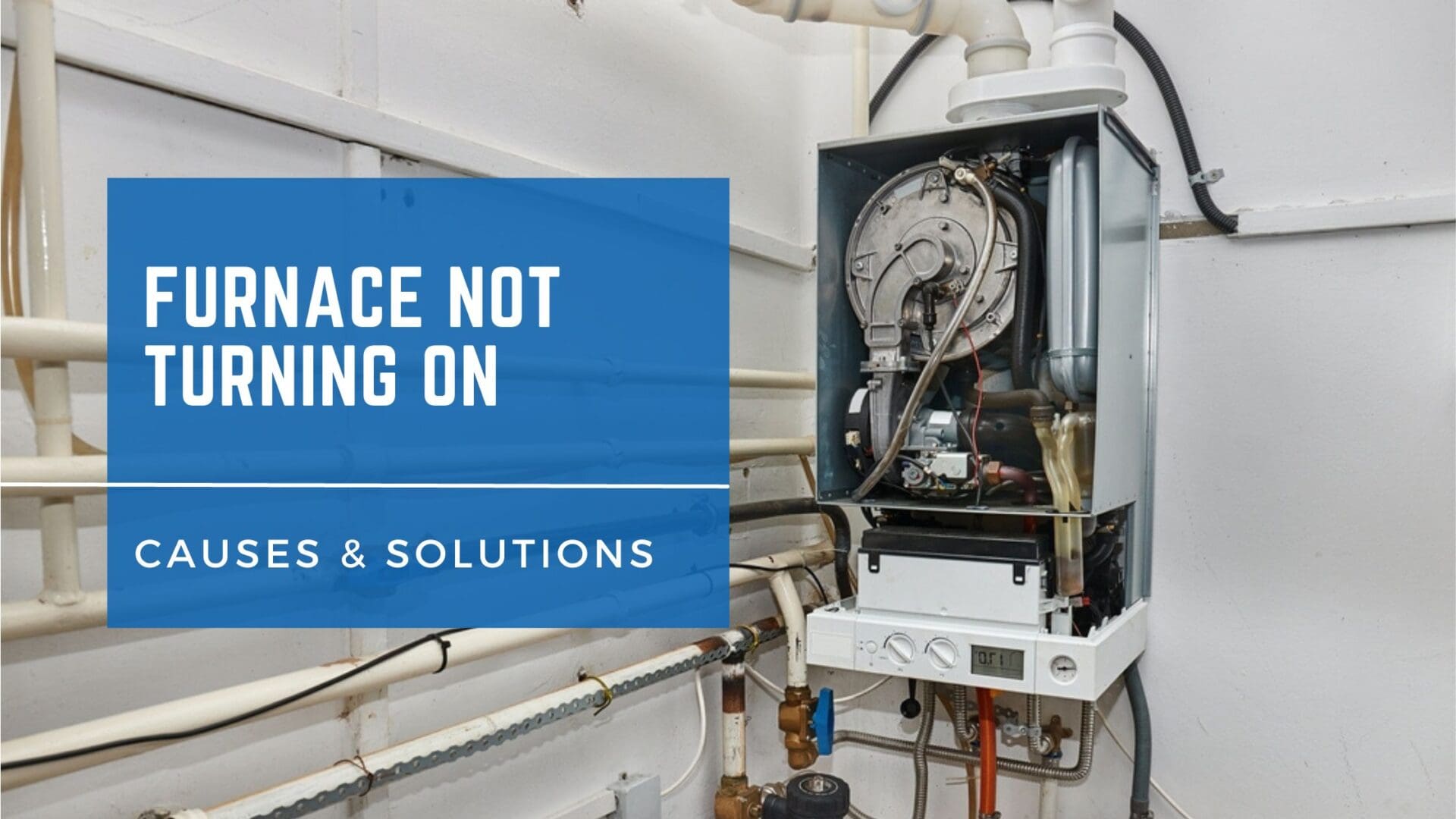
Furnace not kicking on when the temp drops? When your furnace malfunctions, it’s more than an inconvenience. Temperatures drop, and without warm air, your home’s pipes can freeze and burst, which compromises your home’s structural integrity — not to mention the thousands it can cost in damages.
Keeping your furnace in good health is paramount to keeping a healthy, safe home. The best step to take when you realize your furnace isn’t working? Sometimes, it’s not calling for help; it’s identifying the source of the problem and fixing it on your own.
By deepening your understanding of the mechanics of your furnace paired with learning the top reasons why furnaces fail, you can fix your furnace to pump your home full of that warm, cozy air in no time. Grab your toolbox and your DIY mindset and let’s get to work.
Table of Contents
How a Furnace Works
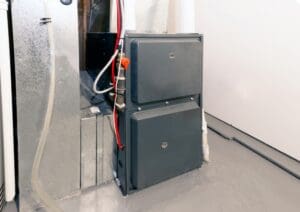
For the most part, all furnaces work the same and undergo the same general processes to heat your home.
Here’s how it works: when you set your home for a specific temperature, your home’s thermostat detects when the indoor temperature dips below the allotted threshold. Then, your thermostat sends a signal to your furnace to kick on, and the heating process begins.
The furnace ignites and heats the air within the furnace, while a flue gas vent releases the emissions. As natural gas warms up a heat exchanger, the blower fan blows air past the heat exchanger, creating more warm air which will be released into your HVAC vent system and dispersed throughout your home. Meanwhile, the duct system sucks in the cold air floating in your home. It then removes cooler air while simultaneously replacing the cool air with warmer air.
The furnace continues to produce and distribute hot air until your thermostat detects that the average temperature in your home has evened out to the desired temperature. The gas valves shut off, the system shuts down, and the process repeats once the temperature lowers again.
There are slight differences between systems. For example, a single-stage furnace runs at only one speed, which means the furnace is either completely on or completely off. Meanwhile, a dual-stage furnace means the system can run at both full and reduced speeds to better moderate temperatures.
Then, of course, there are electric furnaces, which do the same process, but instead of igniting a pilot, it heats the heat exchanger through electricity.
Common Issues: 4 Reasons Why Your Furnace Is Not Working
There’s no mistake: furnaces are complex machines with many different moving parts and pieces. The good news is that when your furnace stops heating, the problem is likely due to one of four common problems. Chances are, your furnace won’t turn on because of:
- Ignition problems
- Thermostat malfunction
- Blocked airflow
- Electrical component failure
Read more about these problems (and how to fix them) below.
Ignition Problems
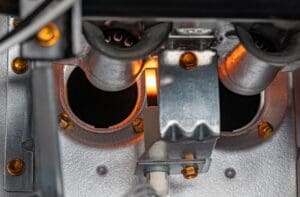
Troubles with your ignition are a surefire way to suffer from reduced or non-existent heating. When your furnace ignition fails to turn on, your heat exchanger has no way to warm up, and the air that blows out of the vent will not be warm.
Sometimes the ignition can’t turn on because of a clogged or dirty air filter. That’s because your ignition hinges on airflow to light. This would typically cause the furnace to blow cold air instead.
To remedy this, change the filter once every 1-3 months.
Additionally, the circuit could have tripped or could have blown a fuse. There could also be a gas leak, although this is rare. If you do suspect you have a gas leak, call 9-1-1 immediately and follow their instructions.
Thermostat Malfunction
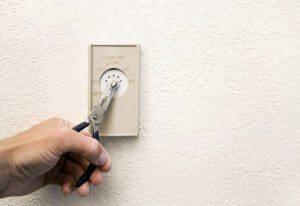
Your thermostat is the mechanism that kicks on your furnace. If your thermostat is malfunctioning, then your furnace has no hope of working. Thankfully, a broken thermostat is easy and affordable to replace.
Blocked Airflow
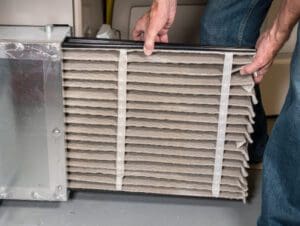
Furnaces depend on robust airflow to produce warm air and distribute that warm air throughout your house. Check for blocked airflow by swapping out dirty filters when they need to be changed. You may also want to check your ducts to see if there is excess build-up that is blocking the airflow.
Electrical Component Failure
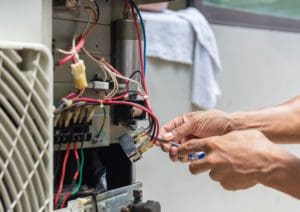
It’s essential to equip your furnace with fuses large enough to handle the capacity of your heating system. If a fuse is too small, it will almost always result in electrical problems. Meanwhile, if your transformer isn’t functioning properly, it won’t support your home’s electrical system correctly. If you’re unsure about your transformer’s capacity, it’s best to contact an HVAC professional as soon as possible.
Furnace Not Working: Troubleshooting Steps
Furnace not turning on? If your heater is not working when the temp drops, there’s a problem. No matter what furnace you have, there are four steps you should take when troubleshooting your furnace.
1. Check the thermostat
The thermostat is the component responsible for signaling your furnace to turn on once the indoor temperature drops below the set threshold. Inspect the thermostat by removing the cover, and then seeing if any wires are cut, loose, broken, or corroded.
2. Check the power supply
If it’s not an issue with the thermostat, the problem may lie in the power supply. Check your home’s electrical panel for a blown fuse, tripped circuit breaker, or bad wire connection.
3. Check the air filters
Clogged air filters will break down the strongest of heating systems. Replace your filter every 1-3 months. Remember that you’ll need to change your filter more regularly if you’re in pollen season, if you keep a lot of pets, or if your home has excess dust.
4. Check the pilot light
The last step is to check the furnace pilot light. The pilot light is the source of your furnace’s entire heating mechanism. If that goes, it cannot warm the heat exchanger, and all the air that blows out will be lukewarm at best.
Furnace Maintenance Tips
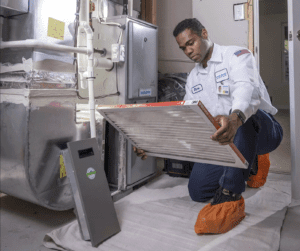
Think of your furnace much like a car. You change your car’s oil, fill the tires with air, detail it every few months, and all around keep up with the maintenance of your car to keep it in good health. Otherwise, your car will suffer burnt motors, popped tires, and breakdowns.
Furnaces are similar. It’s important to care for your furnace and schedule regular maintenance to prevent problems from occurring. Additionally, regular maintenance allows professionals to spot problems before they balloon into bigger issues. Furthermore, an annual furnace tune-up extends your furnace’s life.
Routine cleaning is a big step in keeping your furnace healthy and in its prime. Cleaning the combustion chamber, checking for holes, damages, or leaks in the exhaust flue, replacing the oil and air filters, and cleaning the floor vents are al necessary steps to ensure your furnace remains in a healthy state.
Locating and swapping out parts takes a considerable level of knowledge. There’s no shame in phoning in some help from a professional. Plus, if you clean and maintain your furnace but problems continue to persist, schedule furnace maintenance, furnace repair, and furnace replacement.
Call for Help Today
Heater not working? When your furnace doesn’t turn on, it means more than a little discomfort. A cold house can freeze pipes and wreak structural havoc on your home’s property, leaving you with a mammoth bill in repair costs.
Don’t let a busted furnace get you down: call our team or schedule a service online and receive top-tier furnace repair. Our team of expert heater repair technicians will survey the problem and repair your furnace so you can stop worrying and start enjoying your furnace at its best. Never worry about the heat not working in the house again with HD.


